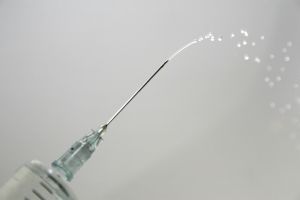No matter how you look at it, ureteral stents suck; pardon my colloquialism. Fortunately, or unfortunately, depending on your personal experiences, one stent will almost always feel different from the next. One doctor can place one type and size of stent in you several times, with the string in or out each time, and for whatever reason each experience will be different, and by “experience” I mean pain.
One stent may have you reeling in pain every time your bladder has been fully emptied, another will leave you with a constant burning feeling in your urethra, one will feel like it stabs you every time you sit down, and yet another will cause only a slight burning sensation when you pee, but it will be totally tolerable.
Then of course people with cystinuria have the added burden of having cystine crystals encrust the stent if left in too long (a.k.a normal length of time for most people), which will eventually increase the daily pain, and add pain upon removal. The only cure for this is leaving it in for a shorter amount of time, which your doc might not like.
Many doctors are quick to prescribe narcotic pain medication to patients who just underwent a procedure that called for a stent placement after, such as stone removals, but the truth is, you shouldn’t need strong pain medication for more than the first 24 hours. There are other medications that are quick to take 80%+ of the pain away, but not all urologists prescribe these medications. Self education is hugely important in this area, especially in times when we only have fellow stent users to rely upon.
Before you undergo surgery for a stent placement, ask your doctor for two medications: Pyridium and Detrol LA. These two drugs affect two different points of pain.
Pyridium is a dye that comes in pill form. When introduced into the urinary tract, it acts as a numbing substance, and while it doesn’t completely deaden the stinging, it makes a huge difference. In fact, it’s almost inhumane to not take it. After my last stent, my nurse said I could take it up to three times a day. I started at three, and once the irritation died down (by the end of the first day) I went down to two pills. By the next day I realized that two wasn’t enough. Three pills allowed me to go through the day in relative comfort.
While on Pyridium, your urine will turn into the color of slightly diluted iodine if taken three times a day. Like iodine, your urine will stain anything it touches, including porcelain, underwear, your fingers if you go a hunting for a stone in a pee bucket (Don’t judge me – it happens!), so be sure to thoroughly clean the toilet and anything your urine touches after each use. You will need a cleaner with bleach to help re-whiten the toilet. For women; be sure to use a thin pad during the day. I didn’t experience any negative side effects on Pyridium.
Detrol LA is normally prescribed for women who deal with incontinence or the need to urinate frequently. In this case, it keeps our bladders from spasming constantly due to the stent. This drug kills two birds with one stone; the pain that comes with bladder spasms will lessen dramatically, and you won’t feel the urge to pee every 15 minutes. When you do urinate, the Pyridium will come into effect and the stinging won’t be as bad. That’s why these two drugs are great to take together.
Detrol LA did cause irritating side effects on the first day I took it. First, my eyes felt like they were heavy and it hurt to move them naturally. My vision was also a little blurry. Also I got one heck of a headache, but not a total migraine. Lastly, I experienced slight nausea. All of these were noted side effects and were gone in a couple hours. Despite the comfort issue with the side effects, it did its job and within hours the bladder spasms were gone and I was able to sleep through the night.
All of the drugs in the world won’t stop you from accidentally tugging on a stent string. You can have the urologist cut the string off after it is placed. This is especially handy if you are a female because of wiping after urination. Also, there’s no risk of tugging on the string, thereby shifting the stent, causing severe pain a million times worse than any stone.
The only drawback to having the string taken out is that the urologist will have to remove the stent using a cystoscope instead of just pulling it out. In all honesty, your urethra is numbed up beforehand, and you can hardly feel the scope going in. When it comes out, the pain is no better or worse than having your doc pull it out by the string. Trust me – I’ve had eight stents, and only two had strings. I’d rather deal with the minor discomfort of a cystoscopic removal than have to constantly worry about patting dry after peeing, and accidentally yanking on it in the shower.
When all else fails and you’re still in pain, try taking a hot bath. Do not use bubble bath or oils as it may cause an infection in your already irritated urethra. The warm water does wonders for stent pain and stress.
Stents are never fun, but they are a necessary evil after stone removals. The one time I didn’t receive a stent; I had extreme pain, nausea, a fever and went into acute kidney failure quicker than a wink all thanks to a post-op blood clot in my ureter that wouldn’t pass. Lesson learned.



